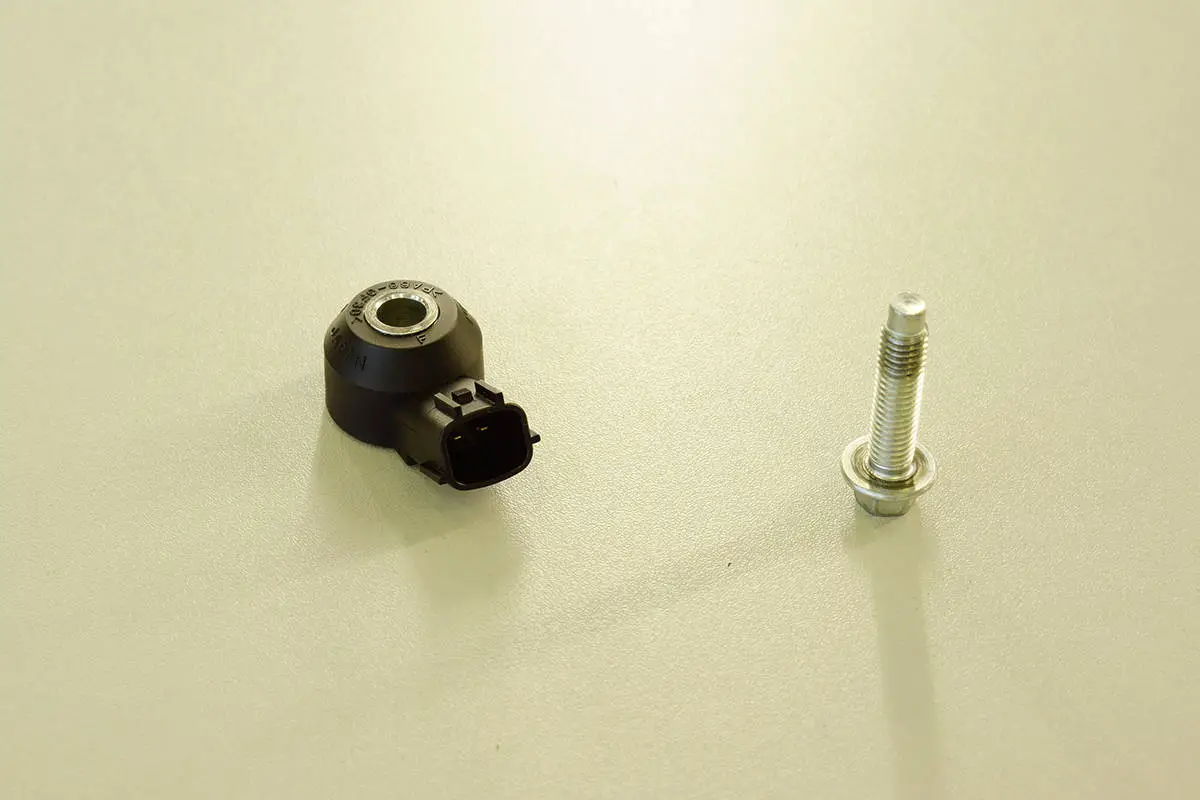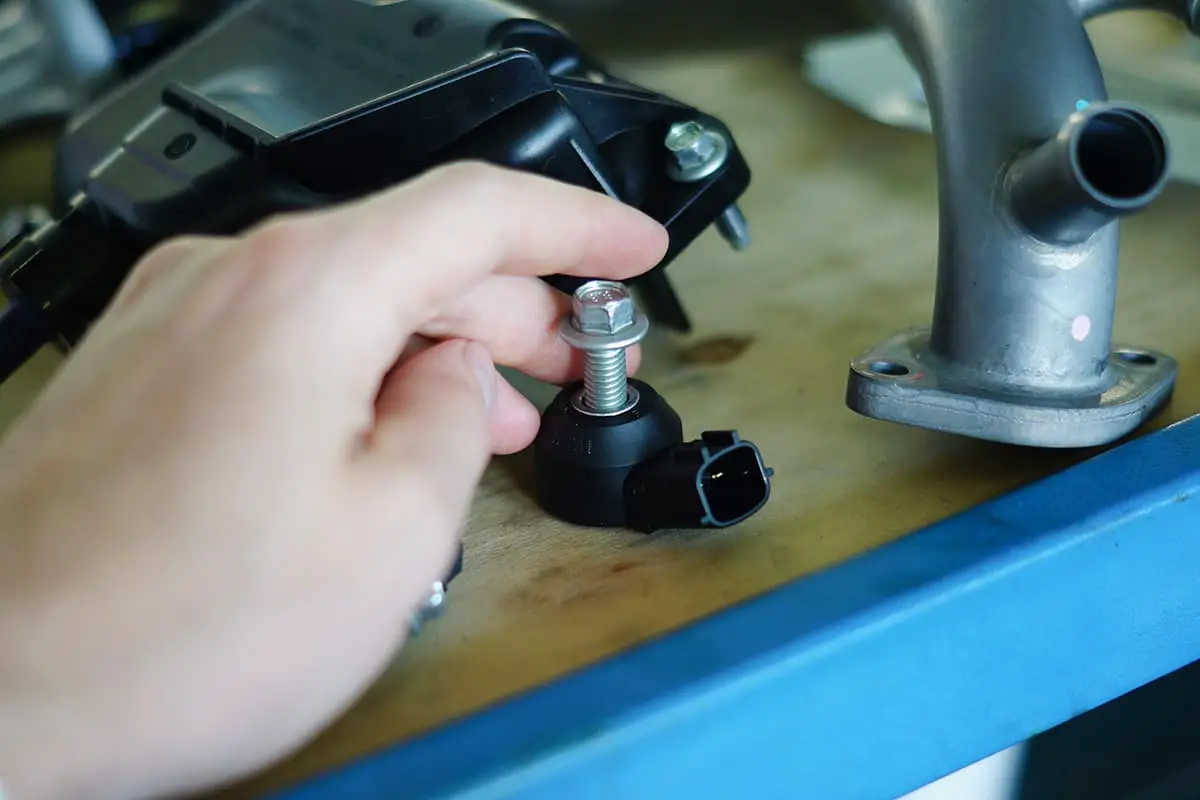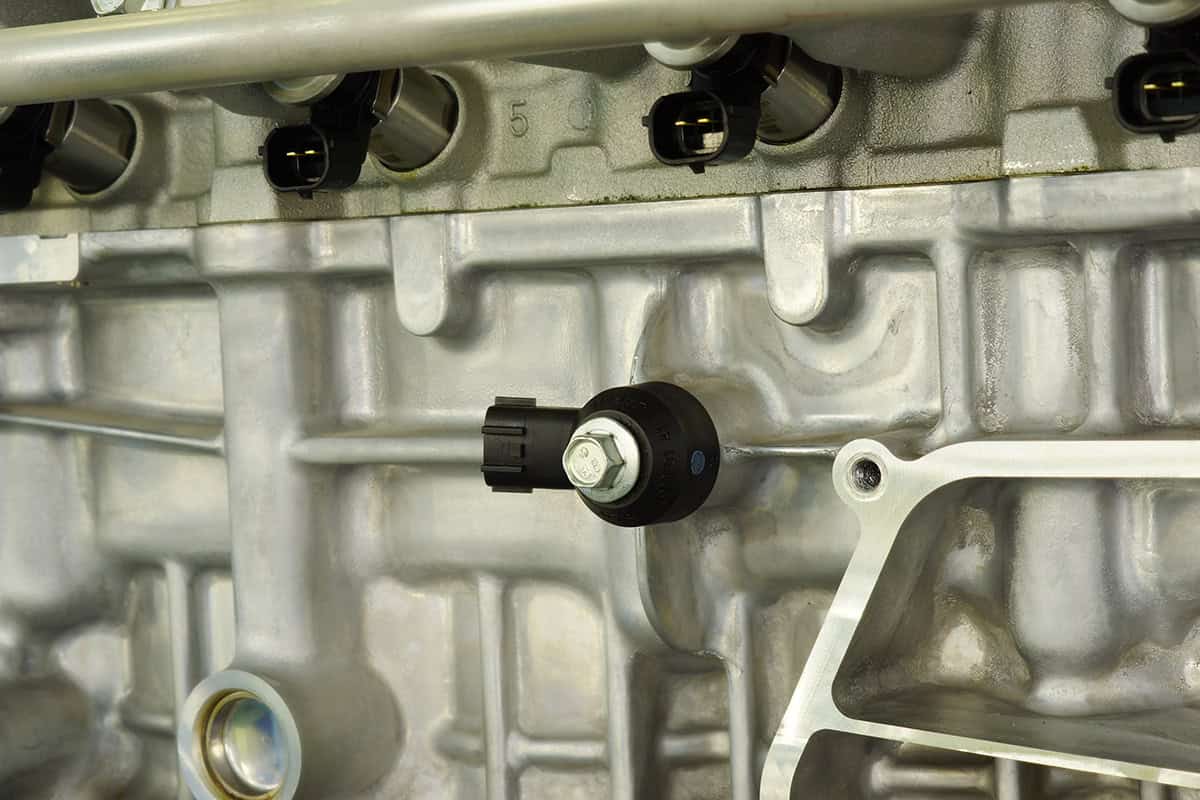As vehicles have evolved, the components within them have become more advanced, ensuring optimum performance and efficiency. One such part is the knock sensor, a key player in the internal workings of an automobile. Despite its critical role, its function often goes unnoticed until something goes wrong—when it becomes faulty.
A knock sensor is an engine component designed to detect engine detonations or ‘knocks.’ A faulty knock sensor can manifest through symptoms such as:
- Decreased engine performance
- Poor fuel economy
- Activated check engine light
- Unusual engine noises
This comprehensive guide will delve into the intricacies of a knock sensor, signs of its failure, and ways to test, repair, and replace it.
Basics of a Knock Sensor

A knock sensor, a key component of your vehicle’s engine, plays an integral role in maintaining optimal engine performance. Primarily, it safeguards your engine from a phenomenon known as ‘knocking,’ or when fuel burns at an uneven rate.
Components
A knock sensor is a small yet complex device. Here’s a breakdown of its main elements:
- Sensor: This is the ‘ear’ of the device. Built to be sensitive to specific frequencies, it listens for the sound of knocking or detonation within the engine.
- Piezoelectric element: The heart of the knock sensor. When vibrations from a knock hit the sensor, this component generates an electric signal.
- Electronic control unit (ECU): The brain that interprets the signal. It deciphers the frequency and intensity of the knock detected and takes action to counter it.
- Housing: A protective shell that keeps the sensor safe from harsh engine conditions and ensures it can accurately detect knocks.
How It Works
A knock sensor operates in a highly coordinated, systematic manner. The process begins when the sensor picks up the vibrations from the engine. If these vibrations match the frequency of an engine knock, the piezoelectric element within the sensor generates an electrical signal.
The strength of this signal corresponds to the intensity of the knock. The ECU then deciphers this signal. If the knock is serious enough, the ECU will slow down the engine’s ignition timing. Delaying the ignition timing helps reduce the temperature and pressure within the engine cylinders, thereby preventing further knocking.
Signs of a Faulty Knock Sensor
When the knock sensor becomes faulty, it triggers noticeable signs. Being aware of these symptoms can prevent more significant issues down the line.
1. Decreased Engine Performance
The sensor’s primary role is to ensure the engine runs smoothly. When it malfunctions, it might send incorrect signals to the ECU, which can then make the wrong adjustments, leading to inconsistent engine power, rough idling, and stalling.
2. Poor Fuel Economy
A damaged sensor can cause the ECU to consistently slow down ignition timing, resulting in a richer air-fuel mixture that burns more fuel per drive cycle. Consequently, you might notice that you’re making more frequent trips to the gas station than usual.
3. Check Engine Light
Modern vehicles are equipped with an onboard diagnostic system (OBD-II) that communicates issues via this warning light. If your knock sensor is faulty, it can trigger the OBD-II system, illuminating the check engine light on your dashboard.
4. Unusual Noises
These noises are typically heard during acceleration and sound like rattling or pinging metal. It’s important not to ignore these sounds, as continuous knocking can lead to significant engine damage over time.
Causes of Knock Sensor Failure
Various factors can contribute to a knock sensor’s malfunctioning, and they often relate to the harsh environment in which this sensor operates.
1. Engine Heat
Knock sensors live in a high-temperature environment. Over time, the heat generated by the engine can take its toll on the sensor, leading to deterioration. This wear and tear can eventually cause the knock sensor to fail.
2. Exposure to Contaminants
The engine is a dynamic and challenging environment. It’s filled with oil, fuel, coolant, and other fluids. If these fluids leak and come into contact with the knock sensor, they can contaminate it, leading to failure over time.
3. Electrical Issues
Since the knock sensor is an electrical component, any electrical issues can impact its performance. This could include a shorted wire, a corroded connector, or an issue with the ECU. All these issues can prevent the sensor from communicating effectively with the ECU, leading to a perceived sensor failure.
4. Aging and Wear
A knock sensor is subject to aging and general wear and tear. Over many miles of operation, the sensor may simply wear out and start to fail, even if there’s no specific fault to pinpoint.
Testing a Knock Sensor

Testing a knock sensor involves several steps. It requires basic knowledge of your vehicle’s engine and some standard tools. Remember to always put safety first, wear protective clothing, and ensure the engine is cool before you begin.
1. Locate the Knock Sensor
The first step is to locate the knock sensor. Its location can vary depending on the vehicle’s make and model. Usually, it’s found on the engine block, cylinder head, or intake manifold. Consult your vehicle’s manual for accurate information.
2. Disconnect the Sensor
Once you’ve located the sensor, disconnect it from the wiring harness. You’ll usually need to unclip it or unscrew it depending on your vehicle.
3. Inspect the Sensor and Wiring
Before testing the sensor, do a visual inspection. Check the sensor for any visible damage, and inspect the wiring for any signs of wear, fraying, or breaks.
4. Perform the Resistance Test
To test the sensor, you’ll need a digital multimeter. Set the multimeter to the resistance setting (ohms Ω), then connect one probe to the sensor terminal and the other to the sensor’s body or ground.
The exact resistance reading you’re looking for can vary, so refer to your vehicle’s service manual for the correct specifications. If your reading doesn’t fall within the specified range, the knock sensor is likely faulty.
5. Perform the Tap Test
As a secondary test, you can perform the tap test. With the sensor connected, gently tap near it with a wrench while the engine is running and someone is observing the engine timing. If the knock sensor is working, the engine timing will slow down. If there’s no change, your knock sensor is probably not functioning correctly.
Addressing Knock Sensor Issues
Upon confirmation of a faulty knock sensor, you should address the issue immediately to prevent further damage to your engine. Let’s explore how to repair, replace, and take preventive measures for knock sensor problems.
Repairing a Faulty Knock Sensor
In some cases, the knock sensor might not need a complete replacement. A common issue is a poor connection caused by a loose or corroded connector. If the sensor itself is in good shape, cleaning the connector and ensuring a tight connection may resolve the problem.
Another potential issue is the wiring connected to the sensor. If the wires are frayed or broken, repairing or replacing them might restore the knock sensor’s function. However, always remember that the complexity of the repair depends on the specific problem and your vehicle.
Replacing a Faulty Knock Sensor
If repairing doesn’t solve the problem, replacing the knock sensor could be necessary. Depending on your comfort level with vehicle repair, you can attempt this process yourself or hire a professional. It involves locating the sensor, disconnecting it from the wiring harness, unscrewing it from its position, and then installing the new one in reverse order.
Be aware that the location of the knock sensor varies and can sometimes be challenging to reach. Furthermore, correct installation is essential as too loose or tight a fit can impact its function. If you’re unsure, it’s advisable to consult a professional to avoid causing further issues.






